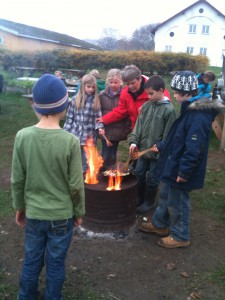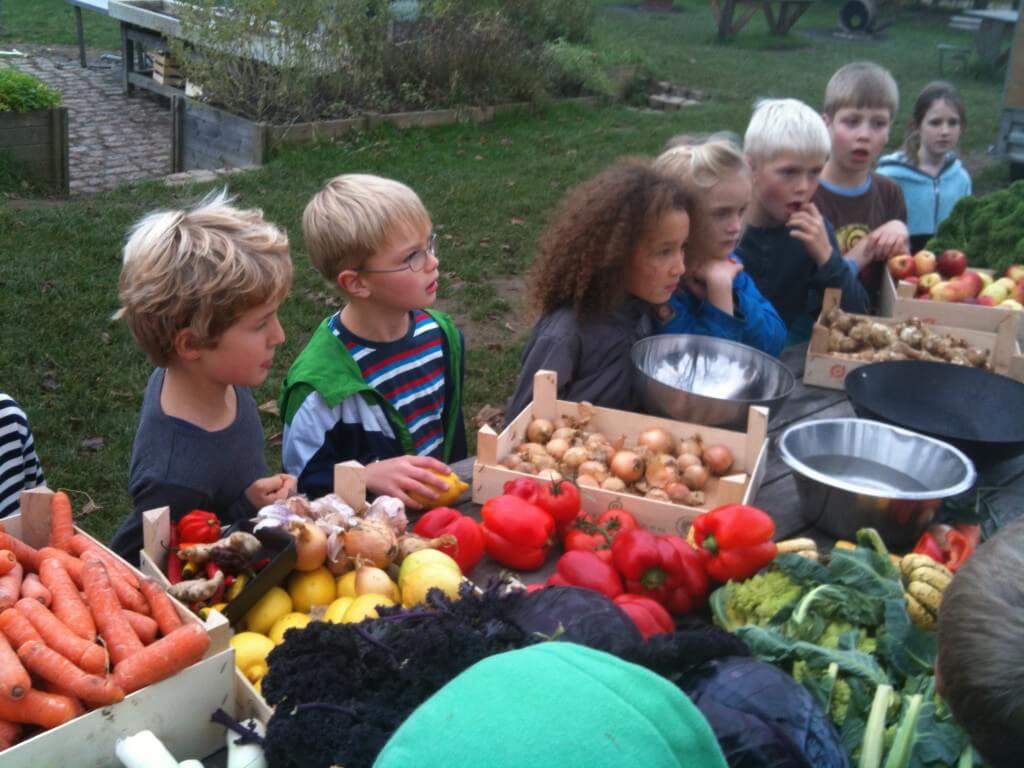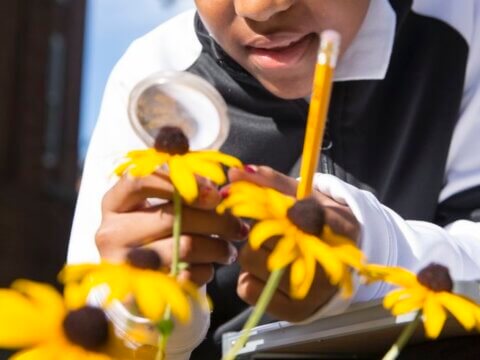UDESKOLE IN SCANDINAVIA: Teaching and Learning in Natural Places
It is August. It is first day of school and the sun is shining. The new pupils are curious and excited; their parents likewise. The school and the classrooms are decorated. The head teacher wears a suit and a tie, and the new pupils have new clothes, new school bag, combed hair, stars in their eyes, and great expectations. Nine years later, most of these expectations and stars are extinct.
It is not unusual to hear stories about pupils being tired of school and disengaged in school learning. Anecdotal evidence suggests that as early as primary school there are pupils who lose the urge to learn, and that approximately one third of these students have lost the desire to go to school at the end of secondary school. This lack of motivation may be due to the way school teaching and learning is organized in our society.
Scholars have pointed towards a number of inherent problems in the structure and organization of ‘modern’ education. Historically, the ‘mainstream’ curriculum has focused on the classroom, the book, the teacher, and the timetable. Perhaps, we are left with a school system that is a relic of an industrial society?
If policy-makers, headmaster, teachers, parents, and society at large wish to increase pupil’s motivation to go to school, to learn and to continue with higher education, then a change in learning environment and teaching methods could be a way forward.
Udeskole: Education outside the classroom in a Scandinavian context
The Scandinavian concept of udeskole (meaning “outdoor school”) has been described in a Norwegian context by Jordet, in a Swedish context by Dahlgren and Szczepanski and in a Danish context by Mygind. Udeskole targets children aged 7-16, and is characterized by compulsory educational activities outside of school on a regular basis, e.g. one day weekly or fortnightly.
Udeskole can take place in both natural and cultural settings, i.e. forests, parks, local communities, factories, farms, galleries, theaters etc. Teachers may draw on history and development of the local community to create a closer link between schools, community and local places.
A Danish geography teacher, for example, lets pupils take photos of different places in the local city: the parks, the castle etc. Subsequently, they work with local history and origins of names of places. Other specific examples include visits to local museums, cemetery or library.
Udeskole, however, has mainly been practised in green space to date. One example of teaching in natural places is Røsnæs School, which has a row of “green bases” in the local community, within walking distance. One of them is on private land, some on the school grounds and others on public land. Here, the pupils can identify plants and animals living a specific place.
Udeskole activities are characterised by making use of the local environment when teaching specific subjects and curriculum areas by, for example, measuring and calculating the volume of trees in mathematics, writing poems in and about nature when teaching languages or visiting historically significant places or buildings in history education.
 Teaching and learning activities are often cross-disciplinary. Thus, the approach is often to work with an academic subject matter or concept in its real, concrete form to facilitate learning and understanding. Schools and teachers often argue for the potential of pupils’ getting to know their neighborhood and visiting nature as an aspect of everyday life. Visiting and knowing their local environment can help them develop a sense of community; recognize and understand neighborhoods; and build a relationship with their own place and with local people.
Teaching and learning activities are often cross-disciplinary. Thus, the approach is often to work with an academic subject matter or concept in its real, concrete form to facilitate learning and understanding. Schools and teachers often argue for the potential of pupils’ getting to know their neighborhood and visiting nature as an aspect of everyday life. Visiting and knowing their local environment can help them develop a sense of community; recognize and understand neighborhoods; and build a relationship with their own place and with local people.
Another example of udeskole practice is the teaching mathematics in the school yard with a focus on body and movement. A Norwegian math educator has developed a series of teaching activities where children’s play and movement cultures are integrated with mathematics education. The pupils jump, run relays and use gestures. Pupils in a circle throw a ball while they say numbers in order to practice the time tables or jump math problems in hopscotch.
When practicing udeskole, teachers often encourage pupils work together in large or small groups. At several schools, pupils work together in groups and carry out specific practical task, such as build a table, light a campfire or cook lunch. Every autumn, a Danish teacher from Kalundborg conducts a course in mathematics and home economics; students in collaboration make their own jam of collected blackberries and use a homemade scale to follow a recipe.
Research on udeskole — and the future of outdoor teaching and learning
Emerging Scandinavian research on outdoor learning in school contexts have generally shown positive benefits. Research in Norway has documented the learning potential of udeskole. The influential case study-based ‘Rødkilde Project’ from Denmark found a significantly higher level of physical activity among pupils during outdoor learning in natural settings compared to a “normal” school day, and a Norwegian case study reached the same conclusion through an analysis of physical activity by heart rate monitors in a sixth-grade class.
In a Danish case study, the pupils expressed a significantly higher level of well-being, improved social relations and joy while being taught in the outdoors compared to classroom teaching. A Swedish study documented a stress-reducing effect on teachers using the outdoor environment for teaching.
Some might argue that my initial picture is a caricature or distorted version of the schools of today. But historically, and probably also in much of existing education, the school has focused on the classroom (as a generic learning space), texts (as transferable knowledge) and the teacher (as the knower) in a carefully planned school schedule (as sequences of selected and important knowledge), in a school system that has ignored places, people and activities.
If educators, teachers, school principals, researchers, and parents do not address some of these problems and change the school and institutionalized learning, there are definitely others who will. One way, among others, to address these problems could be through teaching and learning in natural places. In the future, it will be important to explore and answer questions such as: how is it possible to include external learning environments as natural spaces within the conditions that exist in schools and institutions.
Selected references and links about udeskole
Bentsen, P., Mygind, E. & Randrup, T.B. (2009). Towards an understanding of udeskole: education outside the classroom in a Danish context. Education 3-13, 37(1), 29-44.
Bentsen, P., Jensen, F.S., Mygind. E. & Randrup, T.B. (2010). The extent and dissemination of udeskole in Danish schools. Urban Forestry & Urban Greening, 9(3), 235-243.
Bentsen, P. & Jensen, F.S. (2012). The nature of udeskole: theory and practice in Danish schools. Journal of Adventure Education and Outdoor Learning, 12(3), 199-219.
Jordet, A.N. (2008). Outdoor schooling in Norway – research and experiences. Conference proceedings, Healthier, Wiser and Happier Children. Outdoor Education – learning with mind, heart and body. Conference at Branbjerg University College, Jelling, 24th-25th January, 2008.
Mygind, E. (2007). A comparison between children’s physical activity levels at school and learning in an outdoor environment. Journal of Adventure Education and Outdoor Learning, 7(2), 161-176.
Mygind, E. (2009). A comparison of children’s statements about social relations and teaching in the classroom and in the outdoor environment. Journal of Adventure Education and Outdoor Learning, 9(2), 151-169.
More about udeskole in Denmark
Photos: R.L.
1 Comment
Submit a Comment
-
Network News
Earth Day: Young leaders advocate for change
-
Feature
Nature photographer Dudley Edmondson has a vision for the representation of Black and Brown faces in the outdoors
-
Richard Louv
EARTH MONTH: You're part of the New Nature Movement if....
-
Voices
Placemaking: How to build kinship and inclusive park spaces for children with disabilities
-
Network News
Children & Nature Network founders release report on global factors influencing the children and nature movement







Dear Mr. Bentsen,
Congratulations with everything you did about outdoor education. I think it’s wonderfull.
My name is Jolien. I’m a teacher in Belgium. First I was a PE teacher but know I teach the first grade in primary school (6-7 years). Since two years I’m trying to do a lot of things outside the classroom with my pupils but I want more.
That’s why I contact you. I’m very interested in the way the scandinavic nations deal with outdoor education. Now I’m searching for a possibility to observate the way of teaching there. I would like to experience it by myself so I can convince other teachers in Beglium to try the same. And also for myself en for my pupils. I want to expand met knowledge about outdoor education.
Do you have an idea where I can go for this or which schools would welcome a teacher like me?
Thank you for an answer.
Kind regards,
Jolien Dierickx